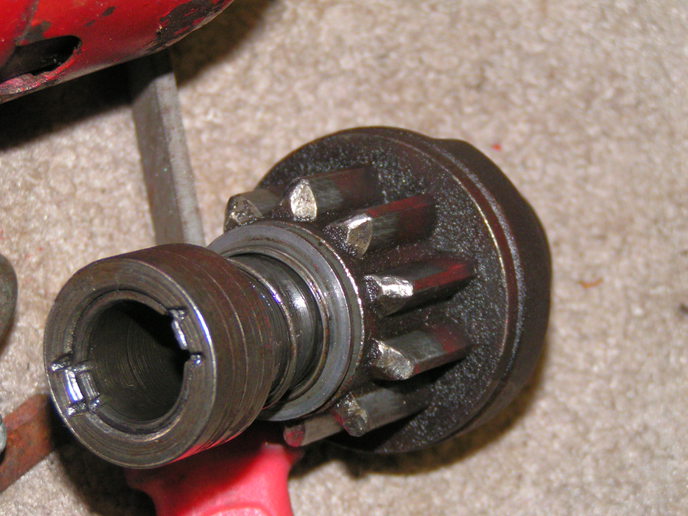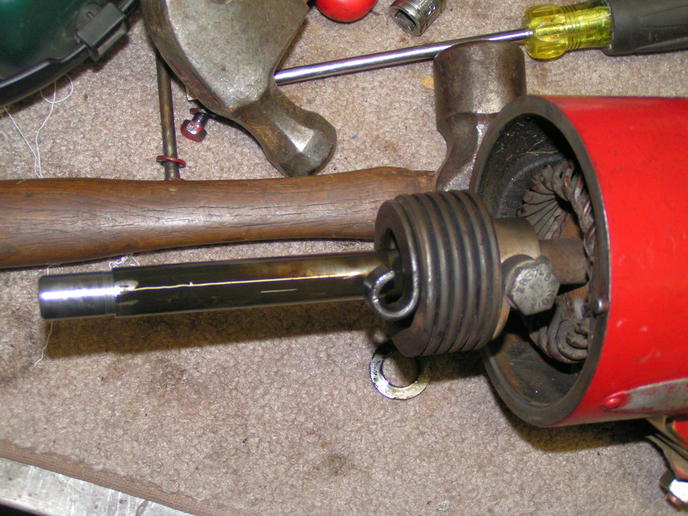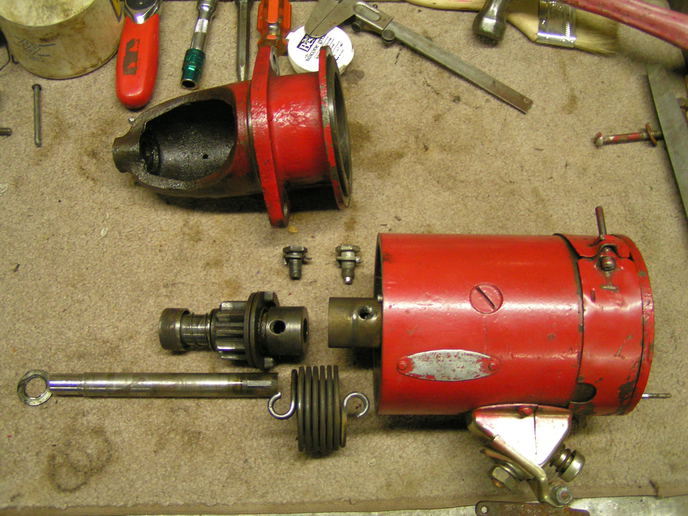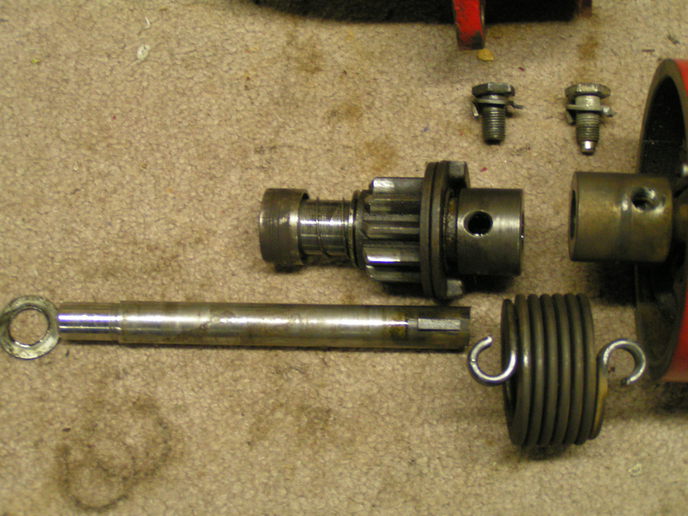Jim,
Thanks for your reply. I have figured it out, though I still differ with a couple of your details, and that is based on my observations this morning. If you’ve had this happen on six tractors, you have a lot more experience than me. Probably 10 times as much because I find I never manage to do repairs just once. So I take your reply very seriously. You made a great point that the starter had jammed, as opposed to meshing correctly and then not recoiling correctly. I hadn’t thought of that simple conclusion. If the pinion was meshing correctly, the starter would have turned the engine over, and it wouldn’t in that situation position. The pinion HAD been jammed.
I was going to say you were wrong here: “The gear stops moving into mesh when the gear finds the end of its travel (grooves and end cap) the flat wound spring is torqued to a slightly smaller diameter and stretched longer in the process.”
After looking at the thing again and waving my hands in circles to get the rotations right I agree that the big spring does act to retract the pinion. The pinion rotates on its spiral about one full turn, which would be the max spring wind-up. If the engine fires, the flywheel will overrun the pinion and shoot it back down the spiral. If the engine does fire the spring will do the same thing. I agree the pinion locks to the final drive shaft only when it reaches either end of its travel at the end of the spiral.
But after reading your last post first thing this morning I went back to the shop, went over all my assumptions, thought about your post, slid on the starter final drive, and looked for all possible ways that it would be forced to turn by the armature. There aren’t any, except the spring. Without the forward spring attach bolt the hollow final drive shaft and its pinion spin round and round freely. The aft face of the (removed portion of the) final drive is flat (at the other end of the final drive in my first pic), and the forward face of the bushing with the aft bolt still in it in pic 2 is flat. No cogs or such. The forward spring attach bolt, the one I removed to take the pictures, COULD have gone all the way through the final drive tube to nest in a pocket in the armature shaft, locking the final drive to the inner shaft. It doesn’t. There is no pocket in the armature shaft. The final drive tube has a 5/16” thick wall, the spring is 3/8”, and the lock-tab washer under the bolt is 1/16”, equaling ¾”. The fixing bolt is 11/16”, 1/16” less than needed to make any contact at all. If you said “It is this tab, or cog, or projection, or bolt, or roll pin that locks the forward part of the final drive to the armature”, and then I found it on mine, I’d have to agree. But you haven’t said that yet and I can’t find anything that would function like that.
I said I figured it out, but didn’t say why. It became clear when I removed the aft spring fixing bolt, which I hadn’t done til now. The aft spring fixing bolt DOES extend down into a pocket in the armature shaft, locking the after part of the big spring through the light colored bushing there to the armature shaft. Which is exactly where the armature shaft had fatigue-cracked and broken in two. I had noticed some axial play in the shaft at that aft bushing before and thought that having a bushing connect two halves of an armature shaft was a crummy way to engineer that part. Hard to keep the shaft straight over its length. But I never guessed the armature shaft could be broken and the starter could still work. Duh. Which kind of explains why the starter was always a bit, uh…..slow and loud. Though it still did work, except when it jammed. To be clear, though the armature shaft had broken, the two halves had never rotated relative to each other. The bolt in the shaft pocket (halves) still held them in register to each other, and the fracture face showed no rotational wear.
I can’t explain the difference between my observations here and your experience. Are we talking about two different types of starters? Doesn’t seem likely. But I could have bought a new final drive thinking it would solve my problem and found out later it was no solution. If you want more pics I can post them. Fortunately I have a crank to start the A, which is why I have this tractor and not something new where we would be talking about computers, which are less rational and predictable than broken shafts.
I had mentioned another post somewhere talking about how the big spring DOES transmit torque to the pinion. He may be wrong too, but here’s the link and that specific post:
http://ytforums.ytmag.com/viewtopic.php?t=553535
Fri Nov 06, 2009 1:36 pm Just an FYI. Those "replacement" drives are actually trying to solve the torque spring problem. The Bendix drive has that hefty flat wire coil spring that connects the motor to the drive pinion, and it tends to break. All the gas over diesels guys can tell you about it in detail. Leave it in diesel and try to crank it and it may be your last attempt at tractor driving for the day. Nothing a $100 and a couple of hours can't fix, if you can get the replacement spring. The heavy engagement of a 12V on a gasser may do the same thing over time. The spring takes a beating and eventually cracks. PS: The later Bendix style drives got rid of the coupling spring.
Anyway I don’t expect to change your mind; experience is a strong teacher. I do appreciate your posts. But I think I’m in the market for a new starter.
Jim





